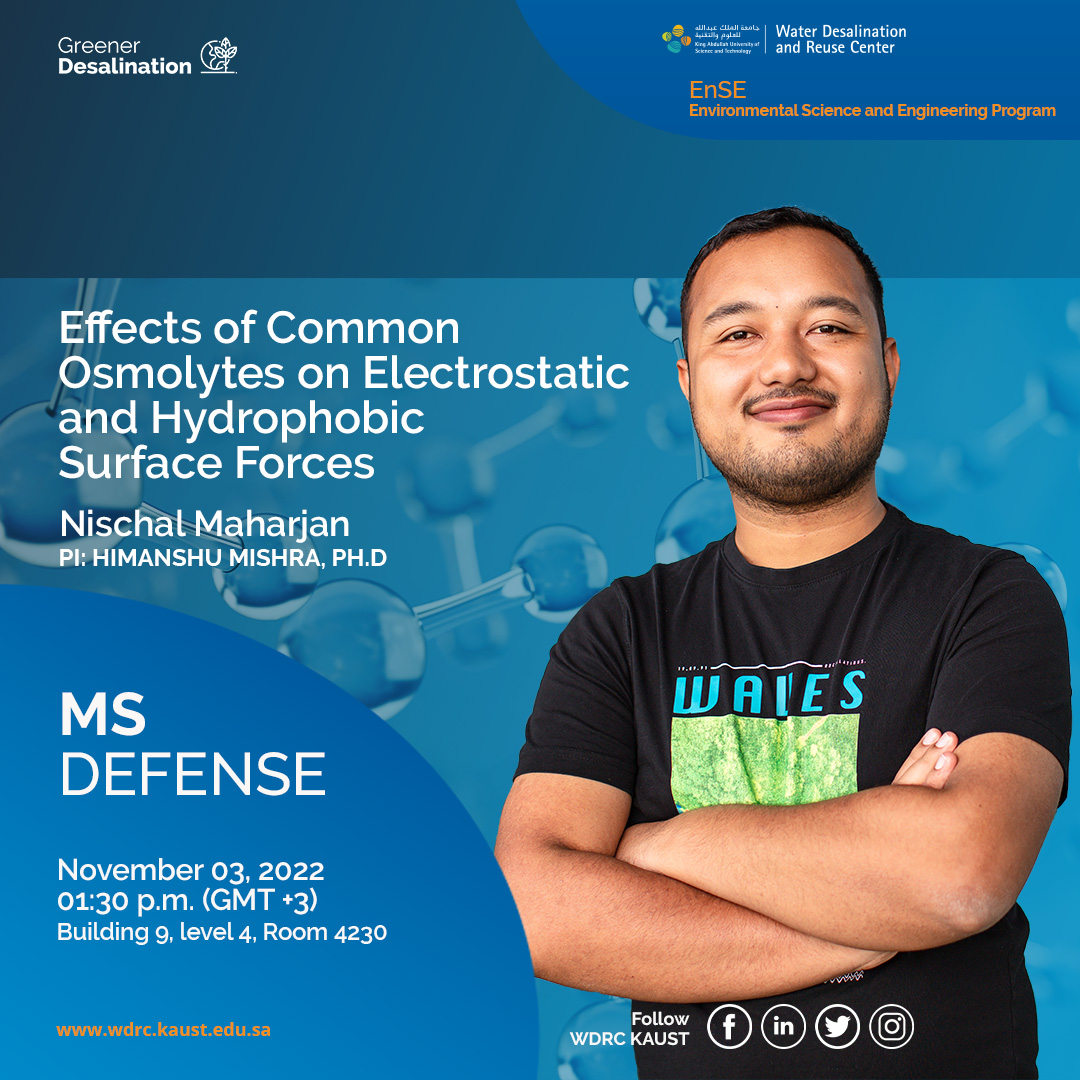



Abstract:
Surface forces due to electrostatics and hydrophobic interactions in aquatic media are implicated in numerous phenomena in natural and applied contexts, such as protein folding, ATP synthesis, flocculation, froth flotation, food and beverage industry, and separation and purification processes. Although the effects of hard ions like K+ and Cl- on such surface forces have been extensively studied and well understood, the effects of common osmolytes such as urea, TMAO, betaine, sarcosine, and glycine on electrostatics and the hydrophobic interaction are not entirely clear. In the recent years, direct surface force measurements are being utilized to probe these effects. The expectation is that these findings will bring us one step closer to understanding the balance of surface and molecular forces in extremophiles, e.g., Escherichia coli, Sepia officinalis, and Dasyatis americana.
In this thesis, we have utilized Atomic Force Microscopy (AFM) and complimentary techniques to directly quantify the effects of common osmolytes on (i) electrostatic interactions between the charged silica surfaces; and (ii) hydrophobic interactions between perfluorinated surfaces. Urea, TMAO, betaine, sarcosine, and glycine enhanced the magnitude of electrostatic interaction. We provide some clues towards mechanistic insight. For hydrophobic surfaces, urea increased adhesion when perfluorinated surfaces were brought into contact, whereas TMAO, betaine, and sarcosine reduced it in the following order: TMAO > betaine > sarcosine. Advancing/receding contact angles were measured to check whether the osmolytes adsorbed onto the hydrophobic surfaces. Contact angle hysteresis data revealed that the adsorption was not significant, and these findings were corroborated via Quartz Crystal Microbalance with Dissipation experiments. Taken together, our findings advance the current understanding of osmolytes’ effects on electrostatic and hydrophobic interactions.
About the Speaker: